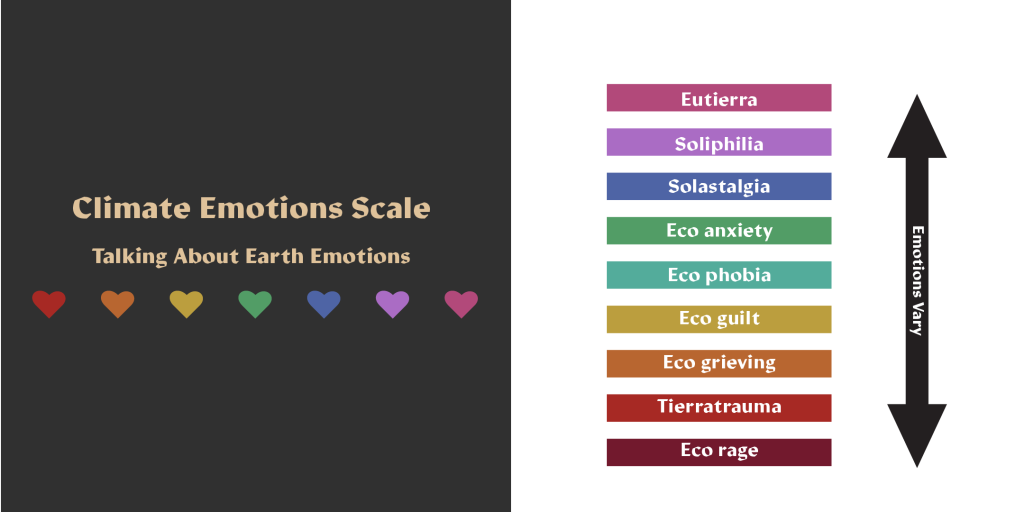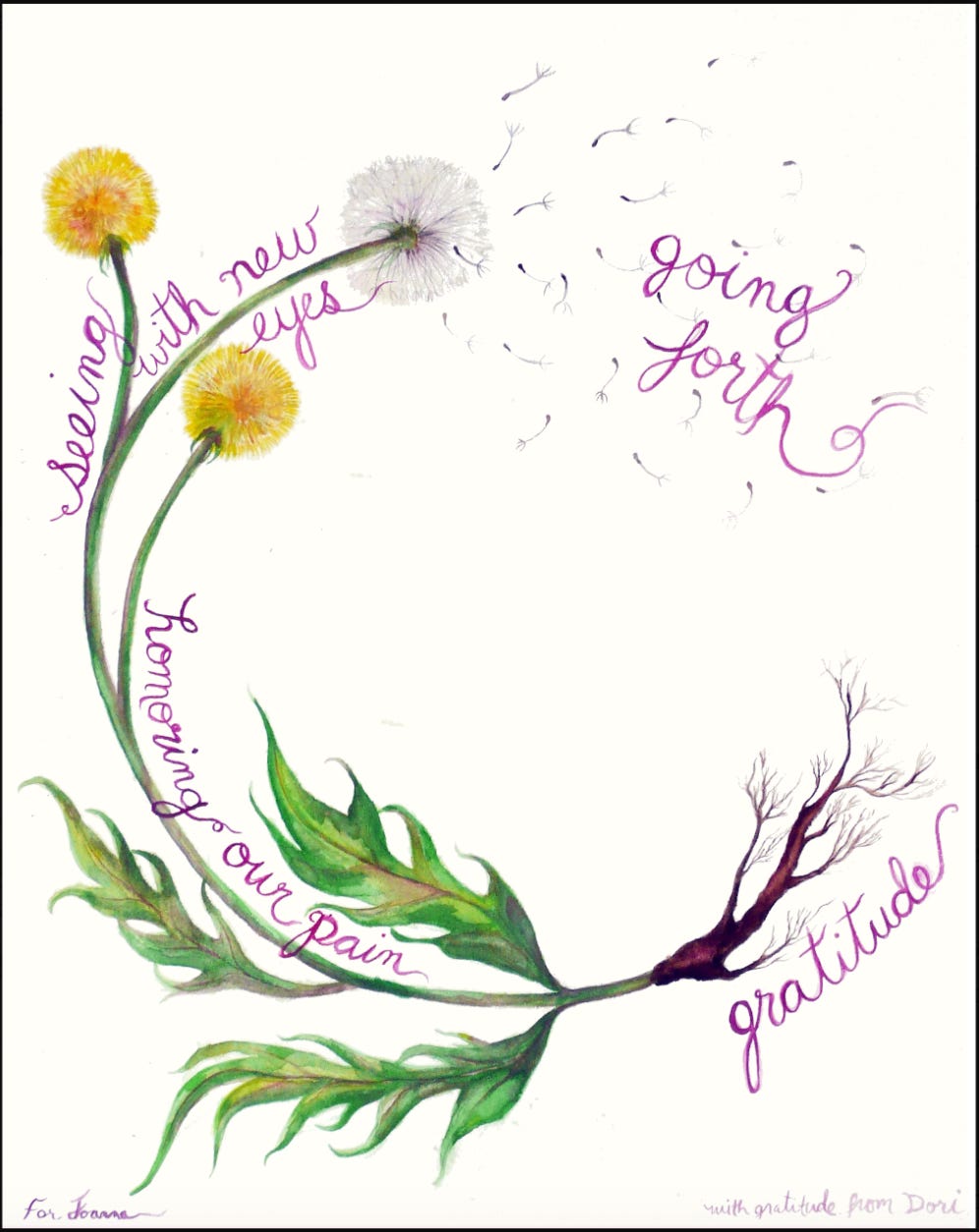Hello friends.
How’s your transition into fall going? My kids started school, I tested positive for COVID, it’s my birthday today, and Rosh Hashanah starts tonight, followed by the Climate March on Sunday, so . . . yeah. Predictably full, but very grateful for a partner who picked up the slack for a few days so I could rest and recuperate.
Coming to the March To End Fossil Fuels in NYC on Sunday, September 17? Ping me—I’d love to see you there!
In any case, I am so excited to share this creation with you. It’s a climate emotions wheel I created in collaboration with the Climate Mental Health Network, based on the research of (and with the permission of) Panu Pihkala.
Psychologist Robert Plutchik is credited with the creation of the original emotion wheel. The basic promise of such an image is that it will help us better name and understand what we’re currently experiencing. Putting words to feelings can be its own kind of relief. From my understanding of the work of Dr. Dan Siegel, which I first encountered as a parent of young kids, naming our emotions literally activates a different part of our brain, the thinking, reasoning part. And, naming our emotions helps us communicate those feelings to others, which helps us feel better understood by those others.
Seeing the emotions wheel is a reminder at the simplest level that there’s a spectrum of states that others have felt before us, and that there are other options other than what we happen to be feeling right now. That’s what I love the most about wheels—they tend to spin, leaving you in a different place than you started with.
So why a climate emotions wheel?
First, the wheel shows that people are feeling climate emotions. That’s something we are still surprisingly collectively silent about, even though climate change affects literally everyone on earth.
Second, the wheel, which is based on a review of 14 published studies, shows that there are many different climate emotions, beyond just anxiety and grief. Climate anger is important— a recent study suggested that it might be the most useful climate emotion, at least when it comes to spurring collective action.
I also find myself drawn to thinking about the positive climate emotions, which are all to easy to overlook. (A flaw of the wheel scheme is that these emotions are not to scale. That is, positive emotions are not as commonly found in the research as the other three quadrants, but they are still very real).
There’s a lot to say about hope, and I’ll have more to say about it in the future. For me, the positive climate emotion that I can almost always, reliably access is interest.
These are some wild fucking times. I honestly have no idea what’s going to happen next! Sometimes, that’s overwhelming, but I also like to practice feeling W I D E A W A K E and fascinated.
What climate emotions are most alive for you, in this day, this week, or this moment?
For more, including a climate emotions wheel worksheet, go to Climate Mental Health Network.
Also check out this other wonderful work visualizing climate emotions:
Isaias Hernandez’ Climate Scale features specialized emotions like Solastalgia: “the homesickness we feel while still at home” in a land that is changing and Eutierra: “a positive feeling of oneness with the Earth and its life forces.”
Kimberly Nichols’ “Five Stages of Climate Feelings” emphasizes the ups and downs that people go through as they pass from avoidance toward a sense of purpose, hopefully without getting mired in despair. Boy, I can relate.
And Joanna Macy’s “Spiral” (art by Dori Midnight) is a beautiful representation of a continuous process of moving with our difficult emotions and rediscovering our resolve to be part of making things better. Her incredible insight is to start with gratitude, including gratitude for our own rage, pain, and fear, because those feelings are all signs of our deep connection to other living things. (Curious to go deeper? The Essential Joanna Macy Course — from a new friend— starts next week)
Some links
I’m teaching a short course at American University at the end of the month: “How To Successfully Engage With the Media and the Public.”
I wrote an “oral history” of the mud at Burning Man for New York magazine.
My recent piece in Grist: ““We’re trying to change something — climate change — that when you look at it in a vacuum it’s, like, insurmountable. But this is boots on the ground. It’s a bit more tangible. I can’t do everything, but I can do this little bit.”"
Large majorities of registered voters support a variety of policies that promote climate justice goals, but most Americans (65%) say they have not heard or read anything about the concept of climate justice (the premise that climate impacts fall disproportionately on poor people and people of color, and that climate policies need to redress this); for more background, I co-wrote this youth-focused primer earlier this year.
“In reality, it’s adults—and disproportionately conservative adults—who are making life much more perilous for children. “American children are in a state of emergency, and without intervention, it will become permanent.”
“Now, climate change seems to be a core worry — it has moved from the periphery to the core.”









